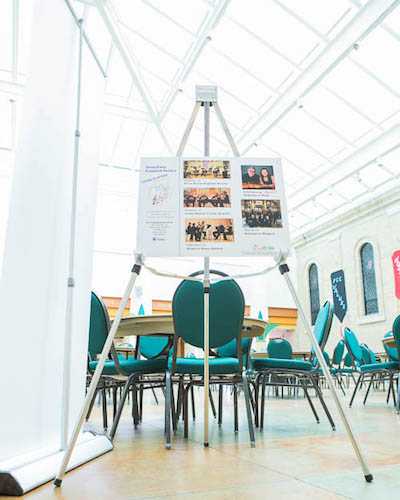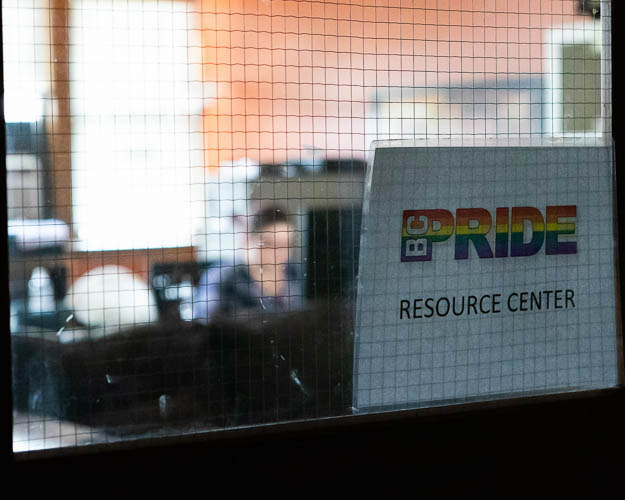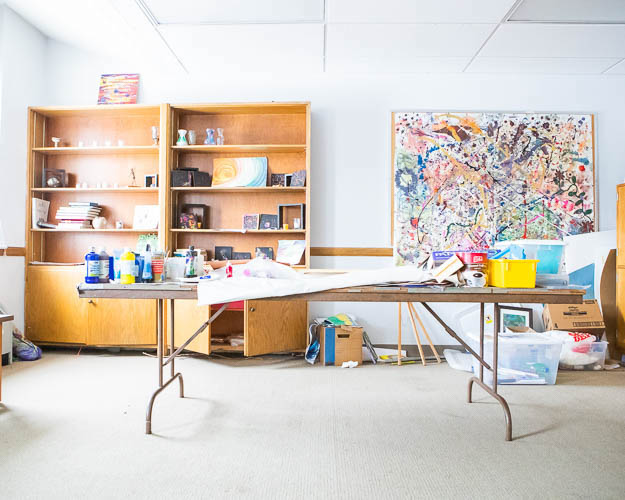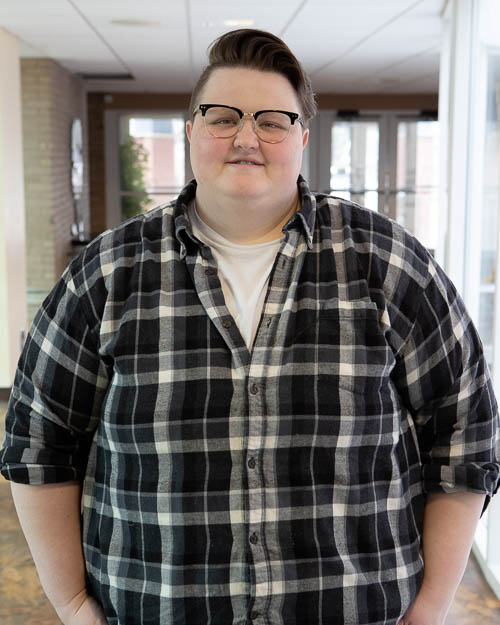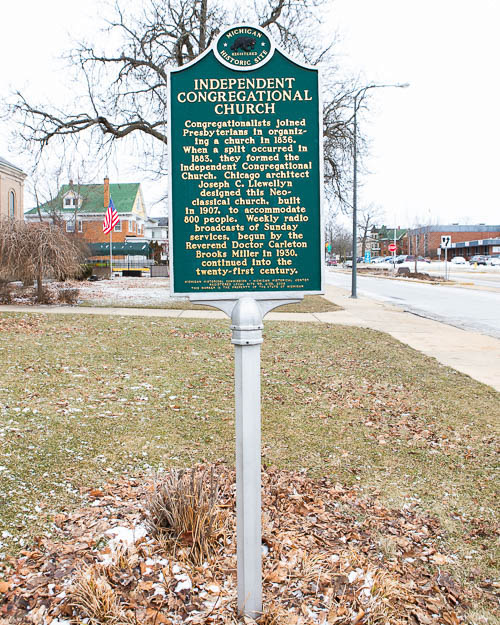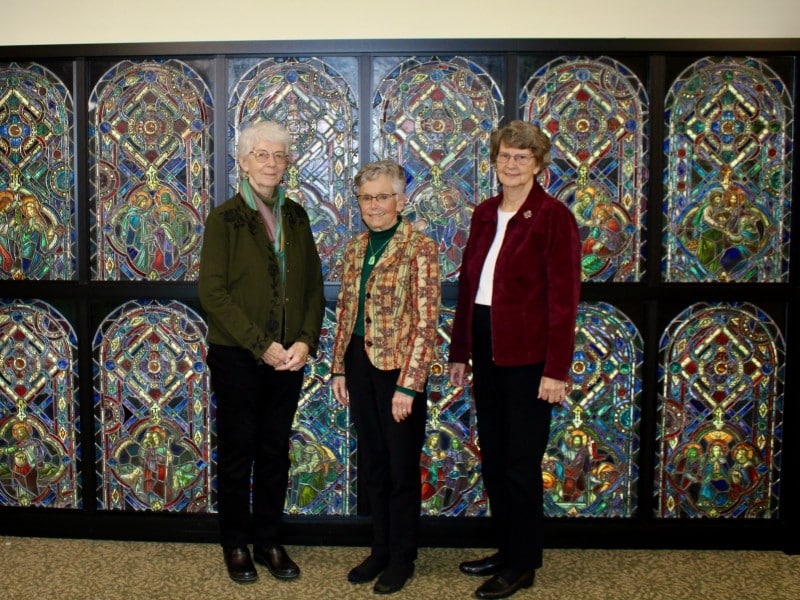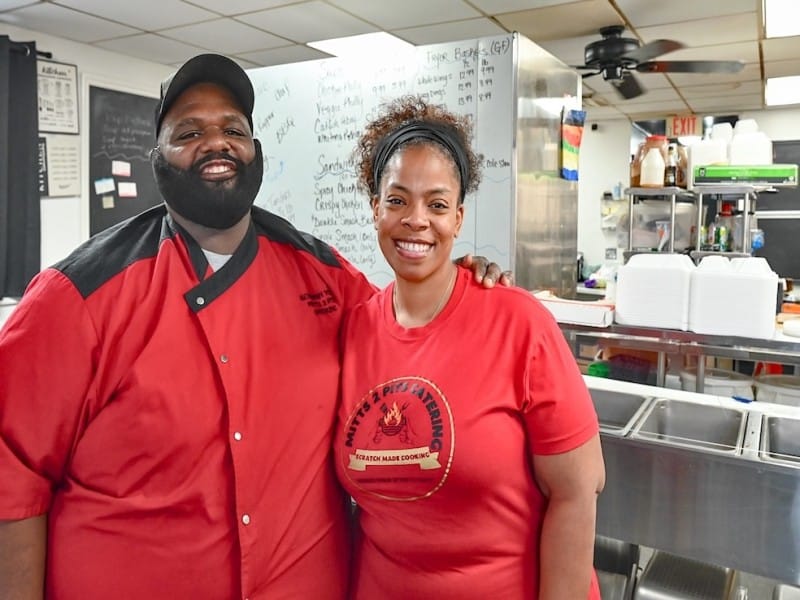From business to office space, Battle Creek’s First Congregational finds new ways to help others
There are 30 different community groups that lease space or offer events at First Congregational Church in Battle Creek.
Editor’s note: This story is part of Southwest Michigan Second Wave’s On the Ground Battle Creek series featuring the Historic Northside.
Declining membership and revenue is prompting mainline churches, including the First Congregational Church of Battle Creek, to seek out ways to keep the doors open and maintain their relevance.
Last year, First Congregational’s church leadership began meeting with consultants from the Center for Progressive Renewal, a nonprofit based in Decatur, Ga., to discuss ways to create a stable bottom line while also remaining true to the church’s core mission “to be an inviting church with an outward focus to connect with those around us with intention, authenticity and depth.”
“We’re in the very preliminary stages of starting to look at spearheading a nonprofit that would own and administrate the building. We’re looking at the feasibility for that and what it would entail,” says Jaimie Fales, First Congregational Church Administrator. “The building is large and the congregation is small. We either utilize it through a nonprofit or the other option is to move.”
The First Congregational Church has a membership of about 400 with a Sunday worship attendance of between 75 and 100 people. Fales says there are about 125 active members.
Despite these numbers, moving the church is not really an option because people in the community are “super-invested” in the church and what it does that goes beyond worship services and ministry, Fales says.
Well before the discussions with Center for Progressive Renewal began, First Congregational was experimenting with various ways to engage the community by making space available to groups and organizations, Fales says. When Fales began working for the church in 2015, Fales says there were some community groups using space in the more than 1,000-square-foot building, but the majority of what was happening remained church-related.
“We’ve grown to point where we have 30 different community groups that use our building for events or lease space,” Fales says. “A lot of this use is music- and arts-related, mostly because of the sanctuary and organ.”
The church has always served as a venue for smaller shows and concerts performed by groups, including local barbershop quartets and the Brass Band of Battle Creek. But, the focus of the building’s shared space has slowly broadened to include nonprofits such as BC Pride and small business entrepreneurs like two local women who are establishing themselves in the food catering business. The women, one who is African American and the other who is Latinx, are using the church’s licensed commercial kitchen to prepare and cook what they sell.
While stopping short of using the term “business incubator”, Fales says being in the church gives the owners of the fledgling catering businesses an opportunity to save money on overhead and equipment expenses while growing their enterprises.
The annual budget for the church’s building expenses is about $225,000 which is over and above church expenses. Rent is loosely based on a square foot charge. Fales says this is something that is still being figured out.
Nonprofits use the church’s conference rooms for training because while their offices may have ample space for employees, they may not have adequate space for staff or board meetings.
The mix of organizations currently sharing space at FCC is working well and Fales says they bring a renewed energy and vitality into the building. They say the biggest challenge is when everybody wants to use rooms at the same time. It takes a lot of communication to make sure there is no overlap or double-booking, Fales says.
They say the FCC isn’t looking to make huge profits, but rather to maintain sustainability and share the building.
“We’re not able to offer space for every small business owner in Battle Creek, so we have to be strategic from an equity standpoint,” Fales says. “It’s also important to us that we’re using our resources for gaps that may exist like those for women of color who are trying to start or establish a business.
“We’re changing how to use our building and attitudes about how we’re going to use the building. We’re not the owners, we’re the stewards.”
This shift is happening in mainline churches throughout the United States, particularly those in downtown areas with ample business space and experience in working with nonprofits, says Gregg Carlson, director of contracted services and senior consultant with the CPR, who is working with Battle Creek’s FCC.
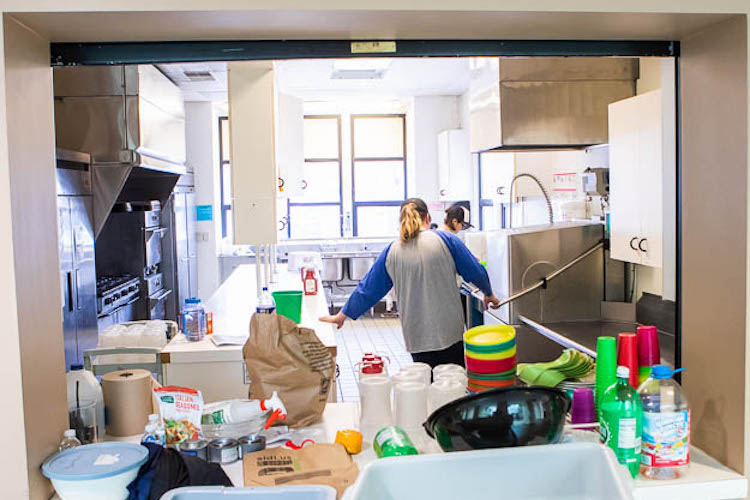
“Increasingly, the congregation has gotten smaller and the building is not the right size for that congregation and the congregation has chosen to flee to the suburbs,” he says. “In many cases churches choose to remain where they are and their congregations want to make their churches more of a community center.”
While grantors won’t fund a religious organization, they will fund a nonprofit if they are working on issues like homelessness of food insecurity, Carlson says. This opens up the possibility of the church providing space to a nonprofit, while also working as a nonprofit managing the building.
Fales says if FCC’s congregation were to approve such a change, the church would be part of the building and not the building.
“The church would be a tenant and the church would be central to the nonprofit tenants because we don’t want to lose sight of the mission, vision, and values,” Fales says.
Randy Case, who has been a member of FCC since 1991 and sits on the Church Council and Property Committee, says the work with the CPR is a way to look at a new approach to support the maintenance and upkeep of the church’s structure, while maintaining its strong ties to community and the people it serves.
The church serves people in the immediate area surrounding the building, in addition to residents living farther away. Case says this focus is a priority for the church’s leadership and congregants.
“We have a great structure and we’d like to continue to maintain that and continue to be part of the community and we’re looking for revenue generation so that we can continue to do outreach work in the community,” says Case, who is an architect and owner of Architecture Design Plus in downtown Battle Creek.
Carlson says the shift to a multi-purpose use of space works well with churches in downtown locations that already have established relationships with stakeholder groups.
“For churches where it makes sense, it’s where the congregation is willing to say the best use of the facility is this,” he says.
However, not every mainline church that Carlson and his CPR colleagues counsel is considering the shared space option. He says many of them are looking for direction to take their churches to the next level in terms of engagement to grow their membership.
Just like with any new endeavor, Carlson says if changes in the organization or its leadership are going to be brought about, the organization must continue to have a plan. He and his colleagues coach senior ministers and teams working on a change plan.
“I believe coaching becomes significant in the process because churches need to get new ideas on the front burner,” Carlson says.
In some cases this may involve using the technology of social media and plans that will drive people through social media to a church’s website with the goal of driving them to that church. The days of people being raised in one particular religious faith are gone, Carlson says, which places a greater emphasis on churches to get their mission and vision in front of people, particularly those who are looking for a church that ministers to people who look like them.
Carlson says what he has found through his work is that mainline churches, particularly those that are moving towards more progressive values are in need of marketing and more effective skills to reach their audiences. He says many of them are still functioning in a 1960’s mindset and need to be more effective in how they utilize their assets and their buildings.
Churches that purport to be welcoming and inclusive of all, need to have pictures which show that, Carlson says. “FCC is very progressive and has reached out to people in the LGBTQ community who look for a church with those values,” Carlson says. “They very clearly state who they are in the world so people know where to find them. You’ve got to clearly put your values out there.”
This what drew Fales to FCC. Fales says they went to a Bible college and were not accepted as an LGBTQ person. They say FCC was one of the first places that fully accepted them for who they are.
“The two things aren’t mutually exclusive — being LGBTQ and a person of faith,” Fales says. “People have no idea how redemptive it is for LGBTQ individuals who don’t have a supportive family to have church people here who look like their parents and grandparents who support them.”
Fales says there’s no doubt that the church is becoming more diverse.
“It is going to be a lot less white and straight in the next 20 to 50 years and marginalized people who have not felt welcome are essential to our church’s survival,” they say.
“The Church as a whole is having to rethink what it means to be church in community, not a country club or one-day engagement where you re-up your faith for the week. The origins of the Church are way more Monday through Saturday as we get closer to its roots and where it started.”
Carlson says that even though some churches are finding it necessary to close their doors, “People still have a yearning to touch something that is spiritual. They’re trying to find that organization where they can be true to themselves. Churches can be that place. What happens is when things like that come along, a church has to be very intentional about who they are.”
“We have to find our niche,” Carlson says of mainline churches.



